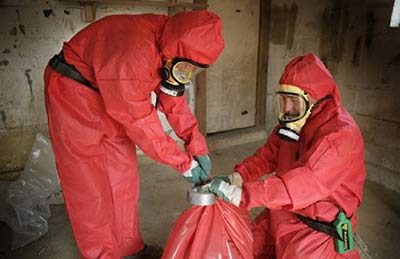Asbestos is a bit of a buzzword in both the legal and construction industries. Barrister’s have made headway by leaps and bounds when it comes to acquiring legal compensation for exposure to the substance, while companies and labourers alike have (since the uncovering of its harmful nature in the 1980’s) attempted to steer clear of it wherever possible. Despite the most noble efforts by parliament to ban its implementation in the year 1999, there continues to exist a portion of the population devastated by exposure to deadly compound.
When one takes a look at the history of contractions of fatal diseases arising out of exposure to asbestos, there is a clear and marked upward trend beginning in the year 1970. Whilst seeming ironic as that was the year public awareness of the issue became more pervasive, it becomes understandable when one considers the timeframe in which mesothelioma ( a cancer of the lining of the organs caused almost entirely by the inhalation of asbestos fibres) can foment. Thus all the labourers being constantly introduced to the material in the 1940’s and 50’s would not have exhibited symptoms until decades later, and likewise for those working in the 60’s and late 70’s. Cases of mesothelioma, which are close to always fatal, nearly doubled between 1995 (1,317 cases) and 2017. More than half of deaths from mesothelioma were people over 75 and 82% were men. Thus, with the population of labourers aging, the cases of mesothelioma are proliferating. According to the Health and Safety Executive (HSE), in 2017 there were 2,523 deaths from mesothelioma. This is a trend that can be observed going back to the previous five years of record keeping.

Being that the use of various two sorts of asbestos (blue and brown) were banned in the UK in 1985 whilst the supposedly less harmful white asbestos was outlawed in 1999, the HSE predicted a more rapid decline in the number of cases arising than the trend currently taking place. While nearly all forms of asbestos are dangerous, the differing varieties carry with them different risk levels. For example, an HSE spokesperson said that controls on the use of blue asbestos were introduced by 1970, but the dangers of brown asbestos were not acknowledged until well into that decade when the alarming rates of mesothelioma began to rise. The heavy use of brown asbestos in the UK and Australia are key factors in why they exhibit some of the highest rates of mesothelioma in the world. There were 2,709 “deaths by industrial disease
recorded by coroners in England and Wales in 2018, a 44% rise on the 1,878 recorded in 1995, the earliest available data. Nine percent of all deaths noted by coroners in 2018 were caused by industrial diseases, many of which were related to asbestos exposure.
Mesothelioma and any other disease caused by asbestos exposure is truly tragic, and in order to ensure the safety of yourself or others it is vital to be checked if you were at risk of exposure so as to ward off any further complications.






